A fully functional organic photovoltaic device has been designed, fabricated and characterised using a self-driving lab. It’s the first time that artificial intelligence has completed a fully autonomous optimisation cycle for an organic solar cell.
Optimising photovoltaic devices typically takes a significant amount of time and personnel due to there being many possible materials and fabrication processes. Moreover, exploring parameters via trial-and-error requires numerous experiments, making it both impractical and costly.
Now, Tobias Osterrieder from the Helmholtz Institute–Erlangen-Nürnberg, Germany, and colleagues have built a system to accelerate the process. It combines an AI-guided sample selection and automated high-throughput experiment platform with a Bayesian optimisation method to find optimal performance parameters in multidimensional spaces where human intuition becomes less reliable.
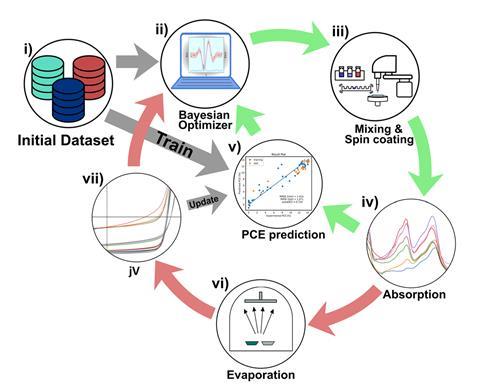
Osterrieder and co-workers conducted two experiments to test their system. In the first experiment, they optimised a ternary active layer for a solar cell by only optimising the ratios of the materials. In the second experiment, they made a solar cell by simultaneously optimising the ratios, concentrations and spin-coating speed of the material solution. Both experiments aimed to enhance the solar cell’s power conversion efficiency. The team found that by determining the optimal parameter set for their cell and obtaining a precise objective function, it was possible to autonomously optimise a complex optoelectronic device with only 40 samples. In contrast, a traditional trial-and-error-based Edisonian approach required around 1000 samples. The team then combined their system with a self-driving lab that employs AI algorithms to optimise organic photovoltaic devices by controlling their composition and process parameters.
‘It’s a great example of how, in general, autonomous labs can help us accelerate finding technological solutions from big problems in academia to industry that can have a big impact on problems we’re facing worldwide including one of the most important ones – renewable energy,’ comments Milad Abolhasani, an expert in self-driving labs based at North Carolina State University in the US. And Zhen Zhou, a computational materials scientist from Nankai University in China, says the approach can significantly reduce the time and cost required versus trial-and-error optimisation. ‘[It] provides deep insights into the structure–property relationship between the morphology and electronic features. This could lead to the development of more efficient and cost-effective organic solar cells, with potential applications in renewable energy and sustainable technology.’
References
T Osterrieder et al, Energy Environ. Sci., 2023, 16, 3984 (DOI: 10.1039/d3ee02027d)


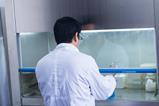
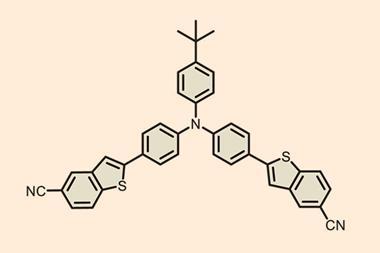
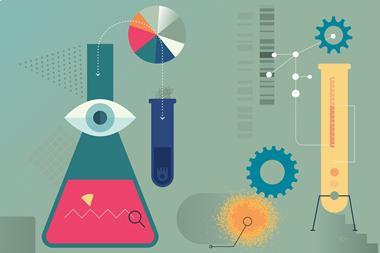
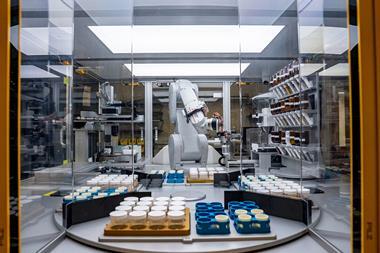

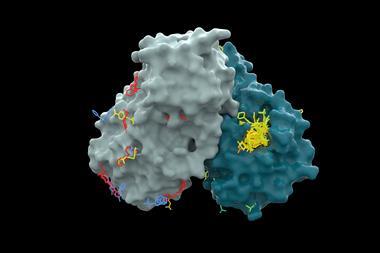
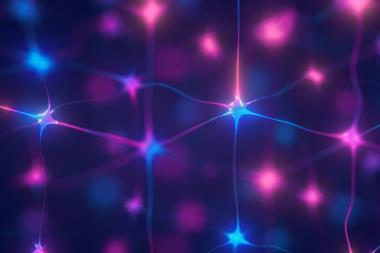






No comments yet